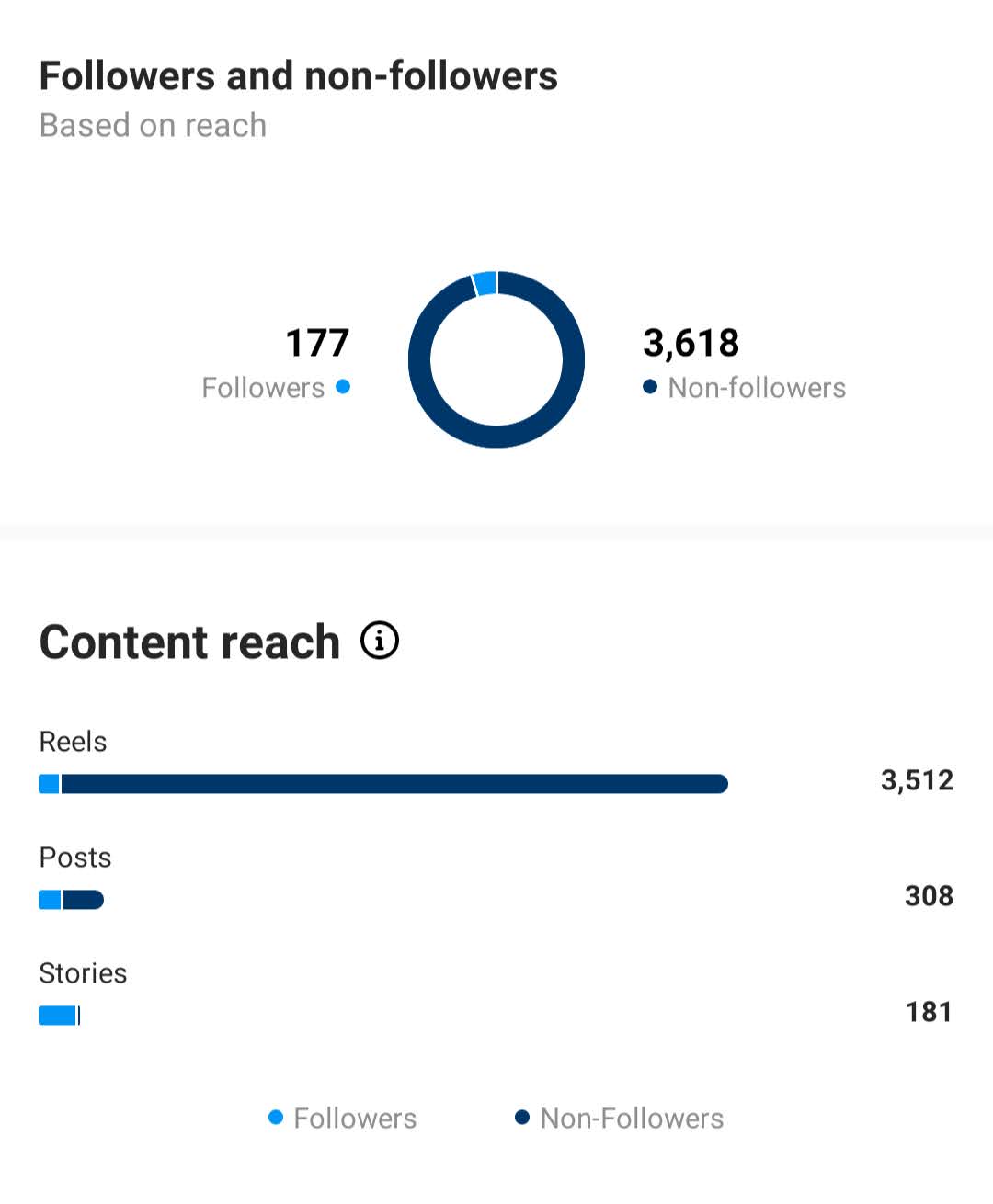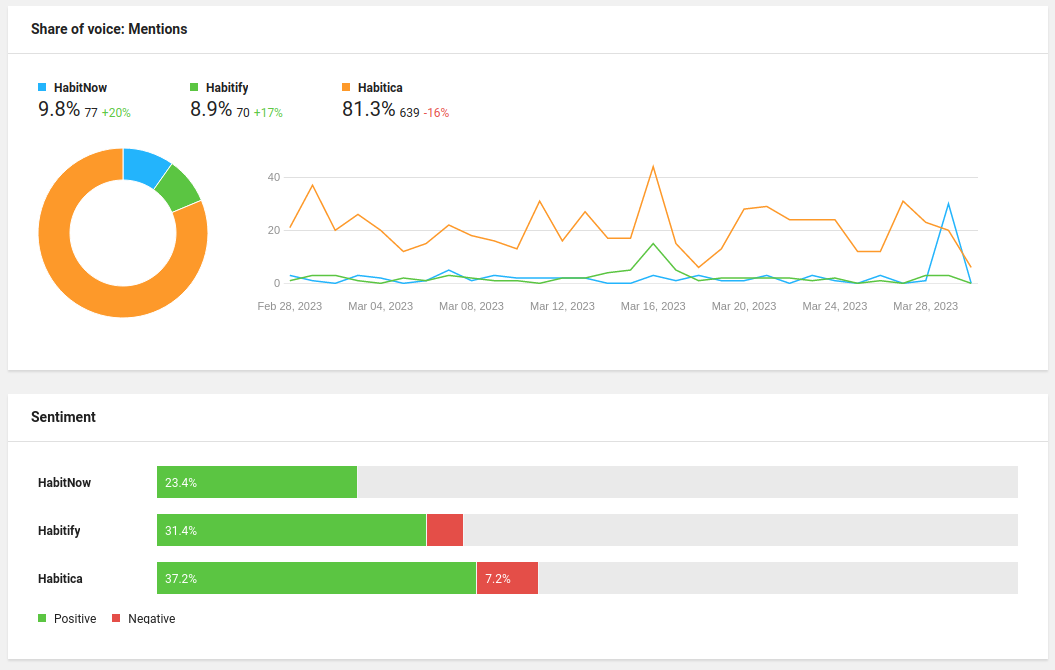Social media brand metrics to track and measure in 2023

Article summary
In this article, we overview all the metrics you need to track for your social media presence and explain where to check them.
Know all the social media metrics out there? Great! But knowing isn’t enough to run a viral social media marketing campaign. It’s only the beginning. Practice is where it’s at.
The true effectiveness of social media metrics begins when marketers realize how to use key metrics for the benefit of their businesses and the marketing campaigns they handle. For that, you have to consider lots of factors:
-
The campaign goals
-
Size of the budget
-
Number of marketing team members
-
and so much more.
So buckle up and read these instructions before you hit launch on your next social media campaign. Below we’ll cover:
-
How to pick the right metrics to get it right the first time around
-
A detailed overview of which metrics matter in 2023
-
How to use them to accelerate your business this year
Let’s go!
Social media metrics are nothing about ascertained truths. These are flexible measurements that change together with the business, social media, and followers' demands. That’s why some social media metrics come, and some go. Here we’ve gathered the most important metrics that you’ll want to follow in 2023.
Awareness metrics

Awareness is the first stage in brand marketing at which your potential customers start discovering your brand. It shows in numbers how many social media users have seen your content and if your business attracts any attention at all. The Awareness metric consists of three elements—Reach, Impressions, and Audience growth rate.
By signing up I agree to the Terms of Use and Privacy Policy
Reach
Reach is a metric that shows how many people have seen your content. While it’s just a number, you can approach it in different ways. You can compare your brand’s average reach over time or monitor the reach of separate posts, Reels, and Tweets during particular marketing campaigns.
Also, when tracking the Reach, it’s worth knowing what the share of non-followers is compared to the followers who see your content. This will help you understand if your brand is getting popular over the social media platform and if its algorithms are making your continent viral. The more non-followers see your posts, the better the algorithms work.
Impressions
This metric is about frequency, meaning the number of times the social media users have seen your content, they’ve not necessarily clicked on it. Usually, it’s higher than the reach, as people can check the same post several times. This can indicate the quality of your content. If a post offers some value to a person, they will be willing to check it several times.
Also, platform algorithms can start offering your content to other people more often, making it viral. This can happen when your content hits the spot and social media platform users are highly likely to appreciate it or when you allocate some budget for displaying your post more frequently to wider audiences on the platform.
Audience growth rate
This metric evaluates how quickly your brand obtains new followers. The audience growth rate doesn’t count the number of people in your new audience. It provides you with the ratio between your old and new followers instead.
To estimate your Audience growth rate, you need to divide the number of your new followers by the total audience and multiply by 100%.
When a brand has a large follower base, it’s getting harder to maintain the audience growth rate at a high level. At the same time, for a newly emerged brand, persisting at a high-level Audience growth rate signifies that the potential followers see the value in it and are interested in finding out more.
Engagement metrics
After learning more about your brand, some people decide to move on, while others conclude to keep up with it and subscribe. Meanwhile, both groups can interact with the brand, and they can do it in many different ways, from liking posts to commenting, to social sharing, and more, providing you with a lot more data to investigate.
When estimating this metric, the two most important points you should pay attention to are the Engagement rate and Virality.
Engagement rate
This metric measures how well your content is performing on a social media platform. It means how many times your content has encouraged your followers and non-followers to respond to it with a comment, a share, or a like.
Just like the Audience growth rate, the Engagement rate is also calculated as a percentage. One of the ways to calculate the Engagement rate is to divide the total number of interactions by the total number of followers and multiply by 100%.
Virality rate
The idea of this metric naturally comes from its name. It’s devoted to showing you how viral your content gets on a particular social media platform.
To understand how much of your content your audience and unsubscribed admirers share with their friends and followers you need to divide the number of shares for a particular post by its impressions and multiply by 100%. See what Impressions are above in the Awareness metrics section.
Customer experience metrics
A well-established sales pipeline with an embedded social selling strategy will allow you to effectively convert many leads into sales. To build it strong, you’ll naturally need some customer feedback and that’s where customer experience metrics can help you the most.
Net Promoter score
This metric will show you how loyal the customers from your audience are and whether they’re ready to advocate for your brand. This means recommending your brand to their friends and family.
When it gets to measuring the Net promoter score, your customers have to answer only one question: How likely are you to recommend this brand, service, or product to your friends, followers, or family? The responses are rated the following way:
-
Low likelihood recommenders: 0-6 points
-
Passive recommenders: (it may happen but not necessarily): 7-8 points
-
Promoters: 9-10 points.
Now, to get an accurate figure, you need to subtract your promoters from low-likelihood recommenders and divide this result by the overall number of respondents. To get this figure in percentage, multiply it by 100%.
The Net promoter score metric is simple but super-useful. It can help you to measure the level of current customer satisfaction as well as to have a glimpse at the potential of your future sales.
ROI metrics
Return on Investment (ROI) is among the most important metrics to follow as it allows you to measure the profitability of your social investment. It means that with this metric, you’ll be able to measure the output—the value of all your social media activities against the resources, time, and money you’ve invested.
There are several separate metrics that create ROI, they include Click-Through rate, Conversion rate, Cost-per-click, and Cost per thousand impressions, and it’s not limited by that.
Click-Through rate (CTR)
This metric is about the number of times people follow the links you place in your social media profile or posts. These can be eternal on-platform links or links that lead to outside resources such as your online shop, mobile application, or else.
With CTR, you can easily realize how many people got interested in your content and are ready to earn more by clicking through links. To measure your CTR, you need to divide the number of link followings by the number of impressions and multiply the result by 100%.
You can still find the Impressions metrics in the Awareness metrics section.
Conversion rate
A high conversion rate is one of the most desirable targets many marketers hunt for. This rate indicates how many social media users have completed a desired action—subscription, order placement, download, visiting an online shop, etc. to the number of people you can reach with your content.
You can count the number of conversions with the help of UTM markers in your links. To estimate the conversion metric, you’ll have to divide the number of conversions by the overall number of clicks and multiply it by 100%.
Cost-per-click (CPC)
This is a special measurement used in ads to determine how much you, as an advertiser, will pay each time a social media platform user clicks your ad link. Cost-per-click is useful when you’re planning to create sponsored social media posts or banner ads during our marketing campaigns.
With Cost-per-click, you’ll be able to simply estimate if your investments in adverts are worth it. To calculate your Cost-per-click, you need to divide the total amount of money you’ve spent on the ads by the number of overall clicks made by the platform users.
Cost per thousand impressions (CPM)
CPM is another metric for ads measurement and it evidently estimates the cost per thousand impressions of your ad on a social media platform. Why do you need it? To count the number of times your ad is viewed by social media users and at what price.
For example, if you’re planning to spend $100 for 20,000 impressions, your CPM will be $5. How do you do it? Just divide the sum you plan to spend by the number of impressions and multiply by 1,000.
By signing up I agree to the Terms of Use and Privacy Policy
Share of Voice and Sentiment

Share of Voice is the metric that helps you evaluate your brand performance against your niche competitors. Meanwhile, social sentiment will illustrate what emotions your brand evokes in its followers with its content. So, how can you estimate them?
Social share of voice
This metric shows how much people talk about your brand and refer to it as an expert in its industry niche. Apart from your brand mentions, you can also track the mentions of your competitors and compare them against each other. This way, you will better realize your brand position in its industry niche, find out who your nearest competitors are, and gain insights on what you should do to reach the top.
To estimate the social share of voice for your brand, you’ll need to perform the following steps:
-
Count the number of your brand mentions in social media be it a direct or indirect hashtagging or just company or product mention in a public post
-
Calculate your Social share of voice by dividing your brand mentions by the overall number of your + competitor mentions and multiply the result by 100%.
Social sentiment
Being an expert in your field and creating a positive brand impression are the two aspects that can easily bring you more followers.
To calculate the social sentiment your brand arouses in your followers, you can gather positive mentions of your brand, divide it by the total number of mentions and multiply by 100%. Another way to estimate the social sentiment scoring is to divide your positive mentions by the total number of mentions with sentiment and multiply by 100%.
Why is tracking social media metrics so important?
Social media metrics work as sensitive sensors of your brand health. They can tell you so much about your brand and its performance on social media.
By utilizing the right metrics, you can quickly understand if your marketing campaigns are heading the right way, where you need to allocate your budget and resources, and gain insights on what to change to make them a thousand times better.
Knowing what metrics you need to track is halfway to the success of your brand, the second half is to utilize the right instruments for gathering and monitoring them over time. So, how can you track your metrics effectively? Let’s figure this out.
How to effortlessly track your social media metrics
Social media metrics—there are so many of them that gathering them manually, let alone tracking is simply impossible. Experienced marketers know well about that and even before setting up a fresh social media profile, they equip themselves with the most effective social media monitoring tools.
Native analytics social media platforms
Every social media platform has a set of its own social media analytics tools adjusted to the characteristics of a particular platform.
-
Twitter has a set of its own analytics tools that help you estimate metrics for each Tweet, track social media campaigns and conversions, and much more.
-
Meta provides analytics tools for Facebook and Instagram where you can track intersecting metrics from both platforms. Given this, both platforms have their own business suits for professional business analytics tracking.
-
Pinterest has its own set of social media analytics tools that provide insights on engagement and presence from every Pin.
-
TikTok also offers a set of business tools for tracking various metrics on the platform such as account overview, content insights, followers insights, and live overview.
Social listening tools
While native social media analytics tools can track an extensive variety of metrics, when you set up several social media accounts, you want to gather consistent data across all these platforms. That’s where social media listening tools such as Awario come in handy.
With Awario, you’ll be able to track all the key business metrics, including brand awareness, engagement rate, share of voice, social sentiment, customer experience, and more. Moreover, the tool allows you to deeply investigate your audience and parse it by target groups in detail. Once you get to grips with the brand metrics and audience analysis, you can move to competitor analysis and influencer research.
Lots of marketers love Awario for its detailed and visual analytics and careful data gathering across a rich set of social media platforms, including Instagram, Twitter, Facebook, TikTok, Twitch, and more.
Google Analytics
Google Analytics is a powerful SEO tool that provides statistics and some basic analytical tools. It works great for websites and also suits well for social media marketing. The tool can provide you with data about the targeted traffic that goes to your website, audience demographics, follower engagement, conversions, and much more.
Marketers add Google Analytics to their social media analytics toolkit as it helps analyze their social media marketing strategies and effectively put these data into practice.
Social media analytics platforms
Of course, there is a wide range of social media analytics platforms. Some of them are free, others require subscription payments. All of them provide analytics data of varying depths. That’s why it’s better to keep up with the time-tested solutions that will support your marketing efforts at any time.
We’ve gathered a detailed list of such platforms in our 12 best social media listening tools in 2023 article, click to find out more about which are the best to use to get the results you need.
Time to take your socials viral? Let’s blastoff
While social media offers much fun and entertainment for users, social media marketers understand each social media platform as a battlefield for their brand’s success. And this melee requires meticulous and precise brand metric estimation and tracking. They carefully consider each metric—how it can benefit their marketing campaigns and bring the desired conversion closer.
If you also consider launching your brand profile on any social media platform, then selecting the right metrics is only part of the job. You also should choose a set of robust tools and instruments that will guarantee you a flying start there.













